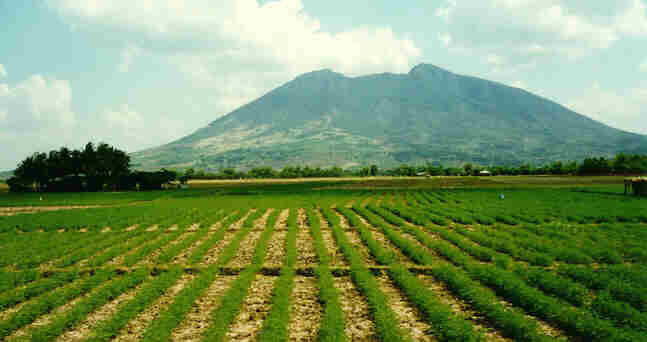October 17, 2013 – PHILIPPINES – AYALA, Magalang — Rampaging runoff from the steep slopes of the fabled Mt. Arayat here at the height of Typhoon ‘Santi’ on Friday evening cut a wide swath of destruction in this village at the foot of the mountain. The high-velocity deluge overflowed the main road, broke down concrete fences and destroyed properties, including rice crops and fishponds, estimated to be worth millions of pesos. A member of the regional mobile group of the Philippine National Police stationed at a man-made dam near a creek reportedly died after being washed away by the rampaging waters. The inundation also reportedly brought down rocks to some people’s backyards. A male resident here was reportedly also charged before barangay authorities after boring a hole on the concrete fence of a nearby commercial pig farm to drain his backyard of floodwaters that were fast engulfing his house. “We’ve never seen anything like this before,” a village resident here remarked. The unprecedented calamity is blamed on unabated charcoal making by folks living on the slopes of the mountain who, according to sources, have cut down hundreds of trees, mostly acacia. Folks here fear that unless authorities stop the continued denudation of the mountain, something worse will befall this village.
This village was carved out of farm and pasture lands previously owned by the Pampanga Agricultural College during the administration of former President Ferdinand Marcos in the ’70s, through the initiative of the Ayala Foundation, hence the village name. The village was subdivided into three categories: rice, orchard and livestock. From a community of a few hundred people, the village has since grown into about 2,000 residents. Mt. Arayat is said to be an extinct volcano, rising over 3,000 feet over the plains of Magalang and Arayat towns. It used to be teeming with forest and wildlife until illegal logging, slash-and-burn farming and other activities destroyed much of its natural resources. Run-offs are not a new experience here. They occur almost every rainy season, damaging crops and properties and washing away a flimsy bridge built over rows of huge culverts each time. But the run-offs seem to get worse each time. And this year is considered to be the worst in years. “This is year, it is run-off; tomorrow it could be boulders from the mountaintop,” a resident here feared. –Sun Star

